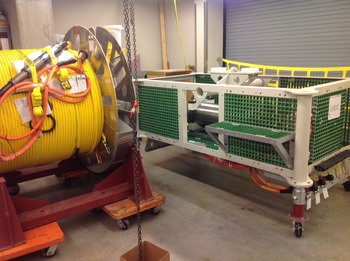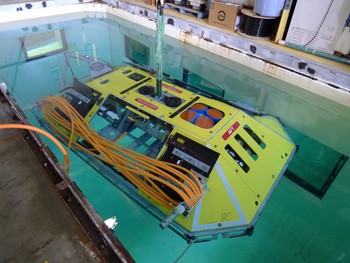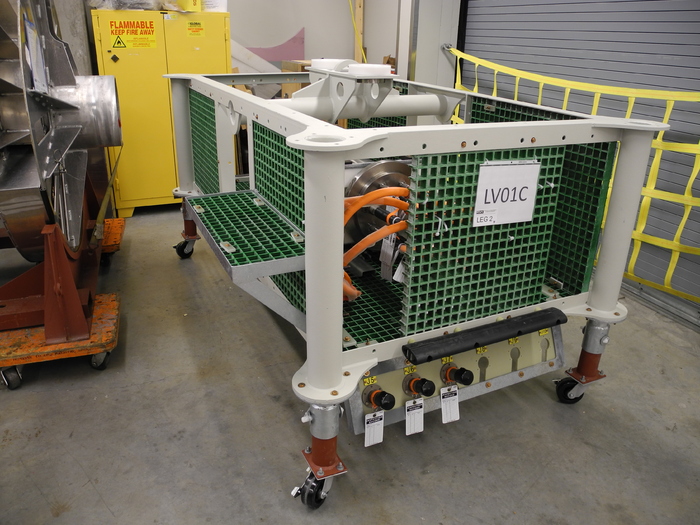New engineering capabilities are transforming oceanography

A variety of extension cables with underwater wet-mateable connectors plug into the junction boxes and nodes. In concert, these assets will provide power and communications to >100 instruments on the RSN. The drums are prespooled and on the ship they are loaded onto the the remote cable laying system on ROPOS (ROCLS).

The Benthic Experiment Package (BEP) is composed of a hazard-resistant frame (shown here), the inside of which hosts an UW-APL-designed Low Power communications housing, and a variety of sensors to measure oceanographic properties that include acidity (pH), carbon dioxide, salinity and oxygen concentrations, and currents. A hydrophone that will be mounted outside of the frame will be used to detect sounds in the ocean.
The BEP is scheduled for installation in 2014 at the Endurance Offshore site that is part of the Endurance Array's Newport Line. This site is also the location of one of the RSN Primary Nodes, which is the power and data hub for the BEP Low-Power Junction Box, which is in turn the power and data hub for a variety of instrument platforms.
Eleven secondary nodes and junction boxes are scheduled for installation in 2014. These components serve as electrical and communications outlets to 23 kilometers of extension cables and instruments that will be installed at depths of nearly 9000 feet beneath the ocean's surface and in some of the most extreme environments on Earth - hydrothermal vents. They come in three "flavors" - Medium Power and Low Power Junction Boxes, and Low Voltage Nodes and they are configured specific to the instruments that will be attached to them by extension cables. They have up to 8 ports and each box/node has 375 volts and 1 Gb/s transmission capabilities. In concert, the power and real-time Internet communication capabilities that these systems provide are transforming the kinds of questions that scientists can ask about the oceans, and the ways that they can be answered. The nodes and junction boxes were designed and built at the University of Washington Applied Physics Lab. In addition, to these nodes and junction boxes, a Benthic Experiment Platform (BEP), developed by Oregon State University as part of the Endurance Array will also be deployed at the Offshore 600-m site. The BEP houses a Low Power Communications housing, designed by UW APL, and numerous sensors inside a hazard-resistant frame.


